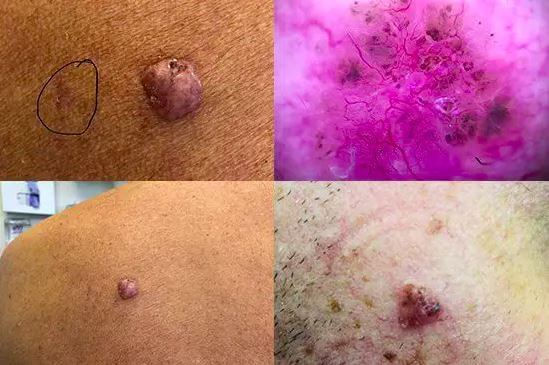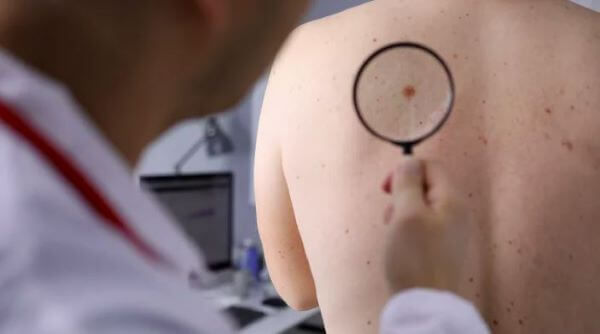Everything You Need To Know About Skin Cancer
- Collins k.k Boateng
- Jan 27
- 5 min read
What is skin cancer? Are there different types of skin cancer?

Whichever type it is, skin cancer is an ugly disorder. Which is the largest organ of the human body?
If you have any experience or know of someone who has been infected with such cancer before, you can share it with us in the comment section.
Skin cancer is a serious health condition that affects millions of people around the world every year.
It occurs when the skin cells grow uncontrollably due to damage, often caused by exposure to harmful ultraviolet (UV) radiation from the sun or tanning beds.
Understanding skin cancer, its causes, types, prevention methods, and treatments can help protect your skin and health.
In this article, we will explore everything you need to know about skin cancer in a way that’s easy to understand.
Content
What Is Skin Cancer?
When do we say a person’s skin has cancer? Is it when the skin changes color abruptly?
Skin cancer happens when skin cells undergo changes (mutations) in their DNA.
These changes cause the cells to grow out of control and form tumors.
While some skin cancers are harmless, others can spread to other parts of the body and become life-threatening if not treated early.
The skin is the largest organ in the body, and it’s made up of three main layers:
Epidermis: The outermost layer that provides a protective barrier.
Dermis: The middle layer that contains blood vessels, nerves, and hair follicles.
Subcutaneous tissue: The innermost layer that stores fat and provides insulation.
Skin cancer typically starts in the epidermis, where different types of cells can turn cancerous.
Types of Skin Cancer

There are three main types of skin cancer, each affecting different skin cells:
Basal Cell Carcinoma (BCC)
Basal Cell Carcinoma is the most common but least dangerous type of skin cancer.
It develops in the basal cells at the bottom of the epidermis.
Basal Cell Carcinoma often appears as a pearly bump, pink patch, or sore that doesn’t heal and rarely spreads to other parts of the body.
Squamous Cell Carcinoma (SCC)
Squamous Cell Carcinoma develops in the squamous cells in the outer layer of the epidermis.
It can appear as a rough, scaly patch, wart-like growth, or open sore that may spread to other parts of the body if not treated.
Melanoma
Melanoma is the most dangerous type of skin cancer that forms in melanocytes, the cells that produce pigment (melanin).
It can look like a mole that changes size, shape, or color and is likely to spread to other parts of the body if not detected early.
What Causes Skin Cancer?
Skin cancer is primarily caused by exposure to UV radiation. However, there are other risk factors:
UV Radiation
Sunlight contains UV rays that can damage skin cells.
Tanning beds and sunlamps also emit harmful UV radiation.
Skin Type
People with fair skin, light-colored eyes, and red or blonde hair are more prone to skin cancer.
Family History
Having a family member with skin cancer increases your risk.
Moles
Having many moles or unusual moles increases the likelihood of developing melanoma.
Weakened Immune System
A weakened immune system, due to conditions like HIV/AIDS or medications, can make you more vulnerable.
Age and Gender
Skin cancer is more common in older adults, though it can affect people of all ages.
Men are slightly more likely to develop certain types of skin cancer than women.
Chemical Exposure
Prolonged exposure to certain chemicals, like arsenic, can increase the risk of skin cancer.
Symptoms of Skin Cancer
Being able to recognize the signs of skin cancer is crucial for early detection. Here’s what to look for:
General Signs Of Skin Cancer
A sore that doesn’t heal.
A new growth or spot on the skin.
Changes in existing moles or spots.
The ABCDE Rule for Melanoma
Melanoma can often be identified using this rule:
A: Asymmetry (one half doesn’t match the other).
B: Border (irregular, blurred, or uneven edges).
C: Color (varied shades of brown, black, red, or white).
D: Diameter (larger than a pencil eraser, about 6mm).
E: Evolving (changes in size, shape, or color over time).
How Is Skin Cancer Diagnosed?
If you notice any unusual changes in your skin, visit a dermatologist. Here’s how skin cancer is typically diagnosed:
Physical Examination
A doctor will examine your skin for suspicious spots or lesions.
Biopsy
A small sample of skin is removed and examined under a microscope to confirm if it’s cancerous.
Imaging Tests
In advanced cases, imaging tests like CT or MRI scans may be used to see if cancer has spread.
Treatment Options for Skin Cancer
Treatment depends on the type, stage, and location of the skin cancer. Common treatments include:
Surgery
Excisional Surgery: The cancerous tissue is cut out along with some healthy tissue.
Mohs Surgery: Layers of cancerous tissue are removed one at a time and examined until no cancer cells remain.
Radiation Therapy
High-energy rays are used to kill cancer cells.
Chemotherapy
Medications are used to kill cancer cells, often applied as creams for surface-level cancers.
Immunotherapy
Boosts the immune system to fight cancer cells.
Targeted Therapy
Uses drugs to target specific genes or proteins involved in cancer growth.
How to Prevent Skin Cancer
Prevention is always better than cure. Here’s how you can lower your risk of skin cancer:
Use Sunscreen
Apply a broad-spectrum sunscreen with SPF 30 or higher every day, even on cloudy days.
Wear Protective Clothing
Wear hats, sunglasses, and long-sleeved clothing to shield your skin from the sun.
Avoid Peak Sun Hours
Stay indoors between 10 AM and 4 PM when the sun’s rays are strongest.
Skip Tanning Beds
Avoid using tanning beds and sunlamps.
Regular Skin Checks
Examine your skin monthly for any changes, and see a dermatologist annually for a professional check-up.
Living with Skin Cancer
Being diagnosed with skin cancer can be overwhelming, but many people recover fully, especially with early detection. Follow these tips to stay healthy:
Keep all medical appointments and follow your doctor’s advice.
Protect your skin from further damage by avoiding UV exposure.
Stay informed and join support groups for emotional and mental well-being.
What is The Color Of Skin Cancer?

Skin cancer can appear as a new or changing growth on the skin, such as a mole, sore, lump, or red patch.
It may also appear as a mole that is asymmetrical, has an irregular border, or has multiple colors, and can be larger in diameter than a pencil eraser.
Additionally, skin cancer can also appear as a non-healing sore, a growing bump, or a rough, scaly patch on the skin.
Frequently Asked Questions
How can I detect skin cancer early?
Early skin cancer detection can be achieved by performing regular self-examinations to check for new or changing moles, sores, or other skin abnormalities, and by getting annual skin checks from a dermatologist.
Knowing the ABCDE rule (Asymmetry, Border, Color, Diameter, Evolving) can also help identify potentially cancerous moles or growths.
Conclusion
What is skin cancer? What causes skin cancer? Is it preventable?
This article covered all these and more.
Skin cancer is a serious but often preventable and treatable condition.
By understanding its causes, symptoms, and prevention methods, you can take steps to protect your skin and detect issues early.
Remember, your skin is your body’s first line of defense, so take good care of it.
Always wear sunscreen, avoid excessive sun exposure, and monitor your skin regularly for any unusual changes.
With awareness and timely action, you can greatly reduce your risk of skin cancer and enjoy healthy, glowing skin for years to come.



Comments